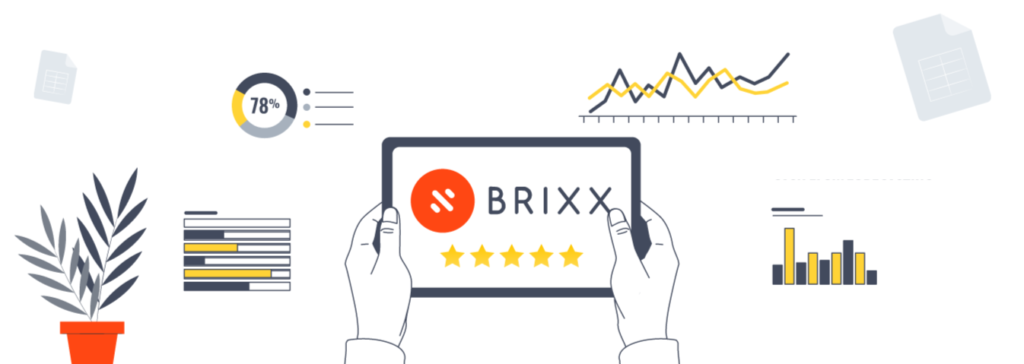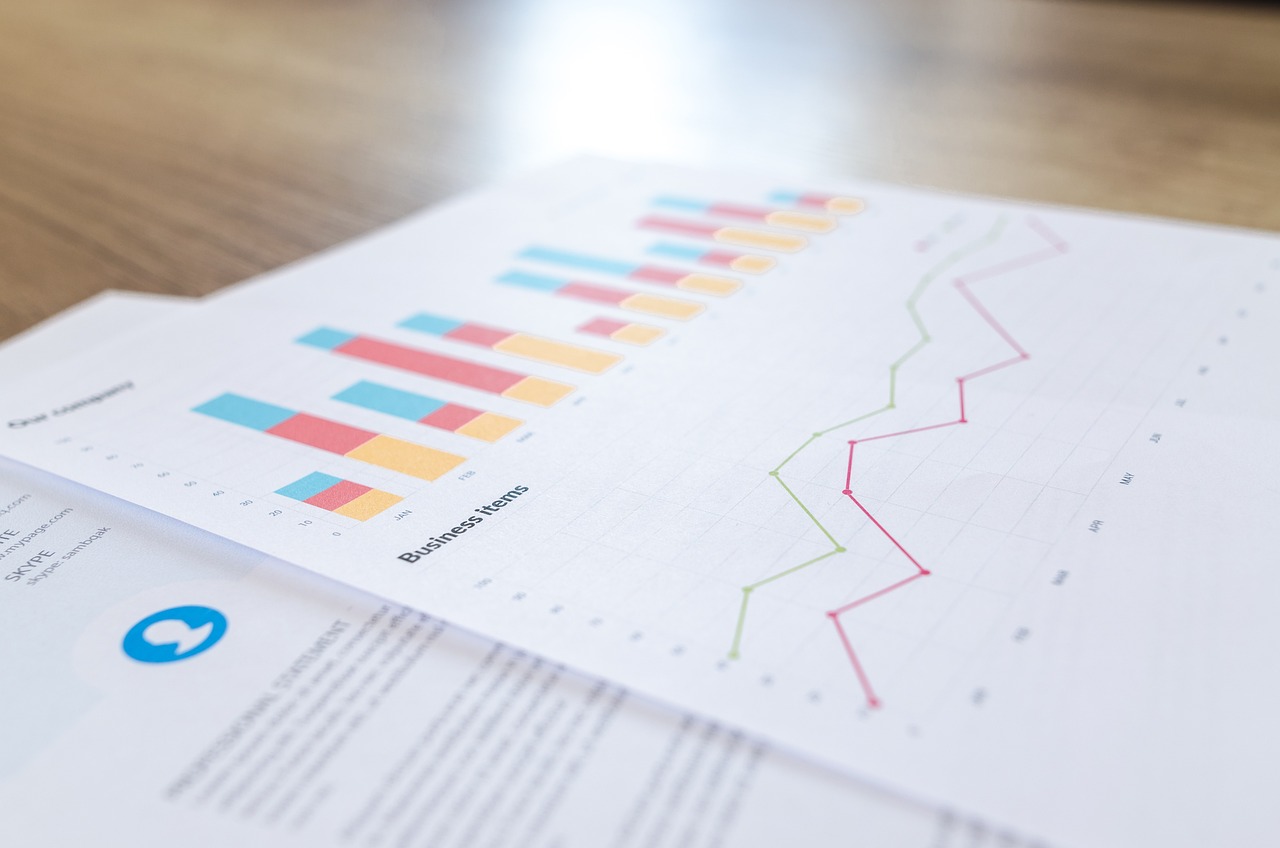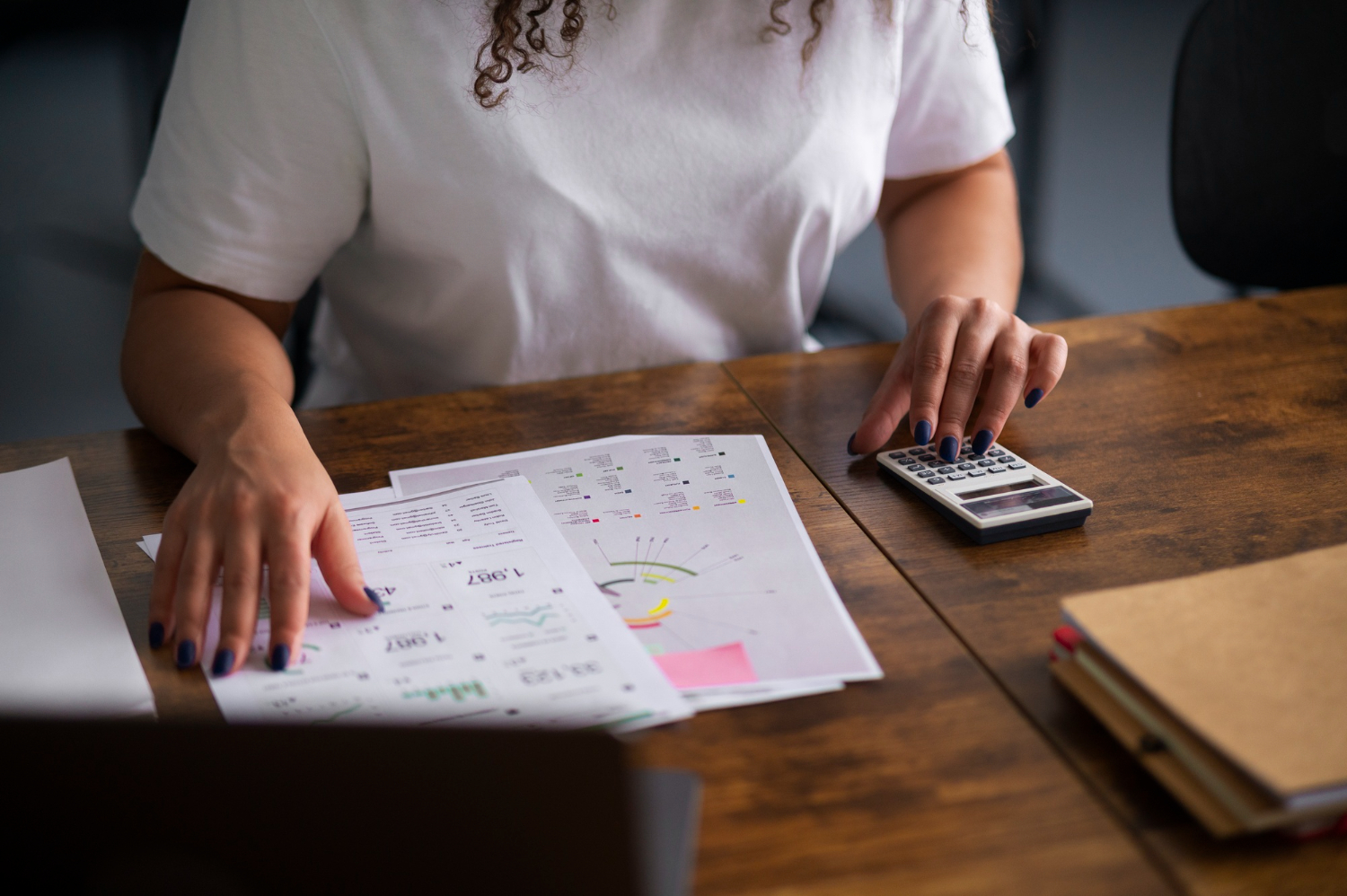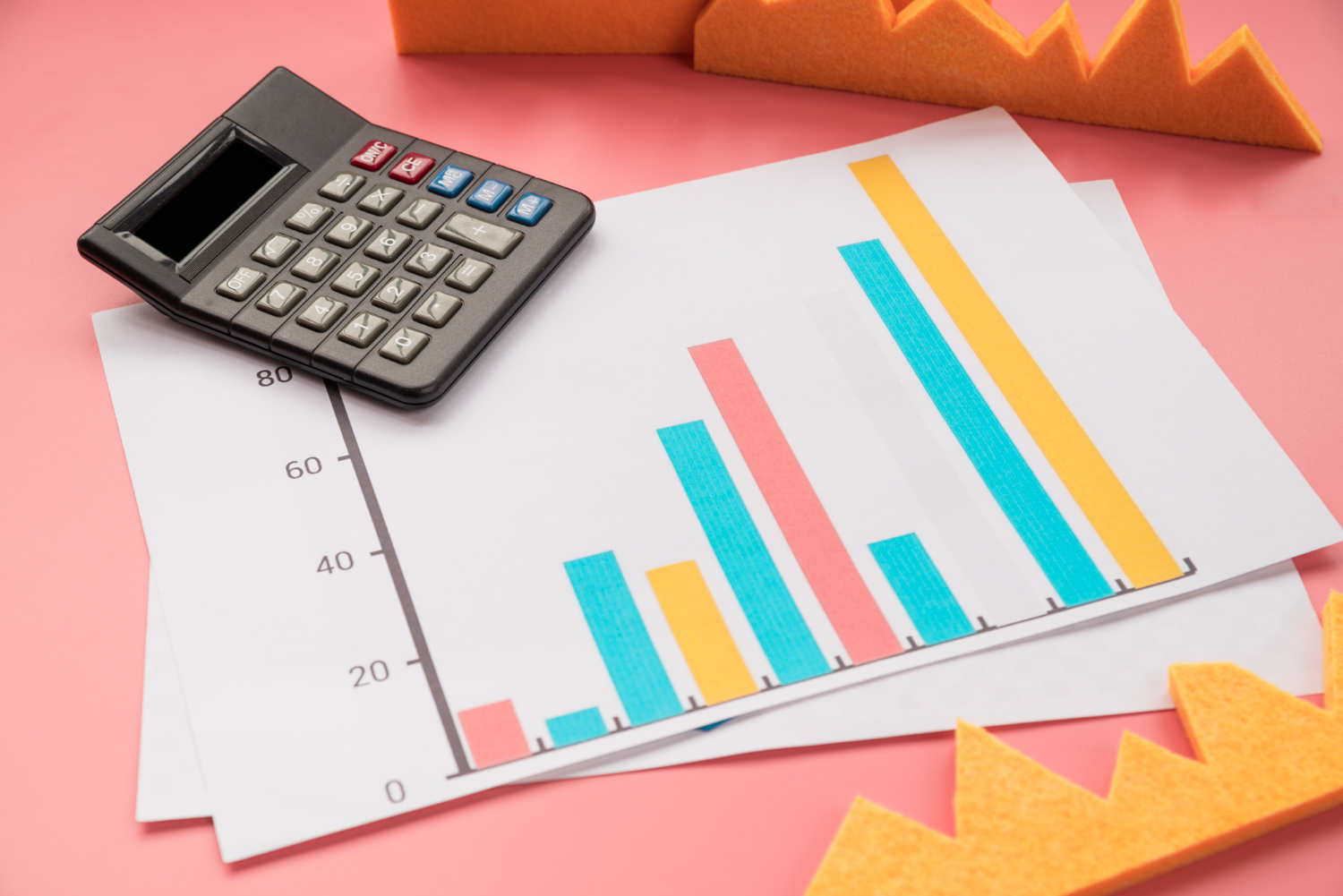

Thanks to the COVID-19 pandemic, restaurants, pubs and cafes have shut and reopened their doors across the UK. However, even before this pandemic, many people have decided to set up food vans. They’re mobile and can offer takeaway service only, which makes them a perfect investment throughout uncertain times.
Now, despite being perhaps a little easier to open up than a traditional restaurant, pub or cafe, a newly opened food van can still pose some complex challenges In this article, we’ll be walking you through each and every step you must take in order to open up a food van in the UK!
By the end of this article, you’ll have even built your own financial plan, that could look a little something like this:
But let’s first start with the very basics – market research.
Market Research for a Food Van Business
One of the most important things to do before you set out with your food van business is to conduct proper market research. But what is market research? Broadly speaking, this means research about your customers & your competitors. This will be different regardless of industry. For example, research for a bakery business will be different to a food van business.
It doesn’t really matter which you research first, but for this article we’ll start with you customers.
Customer research for food van businesses
The main question to constantly ask yourself when you’re carrying out research on your customers is “who is my ideal buyer?” Once you have a mental picture of this person in your mind, this is typically known as your “buyer persona”.
Then you can start to ask yourself, what does this person look like? What are their likes, dislikes and personality traits? These are just a few of the questions that you need to ask yourself when devising the picture of your target audience, though not every food van business will have the same target audience. It’ll vary by location, products you’re selling, and other factors.
Customer research example
We will create this business alongside you. Bear in mind that our ideal customers will differ from yours, just use this as guidance!
Our food van is going to be a mobile cafe, selling hot & cold drinks, cakes and other sweet treats. We will look to set this up on our driveway on the weekends. Thanks to our proximity to a local country park, we can expect plenty of dog-walkers passing by. With this in mind, we can confirm that our target audience is dog walkers and families walking into the country park.
You can do research about your audience online, or by going out into your local community itself.
Some examples of other food vans audiences could be:
- Selling to kids and their parents at local little league football matches
- Partnering with pubs that don’t sell food
- Setting up in laybys
Keep all these tips in mind as you plan your business!
Researching your food van competitors
One of the issues with food van businesses in the UK is that it can be difficult to differentiate yourself from competitors, and that prime spots for setting up are often taken! This is why competitor research is so necessary – you might have a perfect location in mind but find that it’s already in use by someone, or that there’s someone else just down the road that’ll steal all your customers!
But how do you go about doing competitor research?
It’s not always just about who’s in what location – it’s about what times they’re there, what they’re selling and how much they’re selling it for.
Thankfully, for our coffee van example, we don’t need to worry about the location as it is within a private residence. But we should be aware of the café inside the country park, despite this being a good kilometer walk away, .
Now that we know our competitors, we need to think about what we will do to differentiate our business – and that’s what we’ll talk about in the next sections.
Food van business model
A business model is a model of how your company will go about making a profit. There are many different business models – and probably some that haven’t been discovered yet!
You can find many more by internet searching for your business type + “business models” online. However, your options are limited. You’ll be selling directly to the consumer after buying ingredients and products wholesale from a supplier. Or alternatively you might be buying from a supermarket or CostCo and selling at a much higher price.
Get started with our forecasting software so that you can plan your business' futureCreate cash flows for your food van business in Brixx
Pricing your food van products
How you decide to price your products depends on a few factors:
- What you’re selling
- The quality of your products
- Your location and proximity to competitors
Why do these factors matter?
Well, if you’re selling burgers and kebabs, then you should expect to sell these at a lower cost, but if you’re selling these late at night with no other takeaways around, you can sell them at a higher price.
If you’re close to a competitor, you’ll need to either be better in terms of service and quality or be prepared to try and undercut them!
For our coffee van – we have established that there is a café in the country park not too far away so we need to be conscious of this when pricing. They sell their coffees at around £2.50 for an americano and £3 for a latte.
Our van can compete with this pricing, but to be sure we will need to look at financials and how much to charge in order to turn a profit (we’ll look at this later in the article). We expect that customers will come across our van before they reach the café inside the country park – so this should help entice them.
Of course, we can’t just rely on pricing and footfall to attract customers, our van needs to look enticing too!
Marketing your food van
Marketing is all about how you will promote your business. For a food van, the key is to keep your advertising targeted – which means local. So you can forget the £1,000 a month AdWords campaign, it’ll be wasted cash!
You want to focus on your branding, decoration and local advertisements, such as flyers, joining community groups on social media, and newspapers/magazines. Perhaps the most important of all these is your branding – if you have chosen your location right then this’ll be the one of the biggest factors for drawing in passers by. If your van looks clean and is branded with nice colours, people will be more likely to stop. .
What do you need to set up your food van?
Unfortunately, making your dream a reality involves looking at licenses, permits, insurance and ensuring you’re qualified to make your dream. This is where your dream can be delayed; what if that prime spot you’ve got your eye on can’t be used? What if you can’t get insurance?
These are all things to be aware of. Ensure you’ve covered all your bases and do further research. So, let’s break each of these down, starting with licenses & permits.
Licenses & permits needed for starting a food van business in the UK
You will need a Street Trading License, which essentially allows you to sell food on the street.
Fines can be up to £1,000 if you don’t have one. See your local council for details on pricing.
If you are going to be trading in the town/city centre then you’ll want to keep an eye out for permits – are you going to be allowed to park your van where you want to? Again, check with your local council for details on this.
Insurance needed for a food van business in the UK
You’ll want to ensure you get some kind of public liability insurance to cover you against any compensation claims that arise from customers – but even with this, try not to poison your customers!
Public liability insurance can be relatively cheap – you can use comparison sites to see quotes.
Oh, you’ll need to pay your car insurance and road tax too!
Training & qualifications needed for a food van business in the UK
Whilst it’s not strictly necessary to have any prior training or qualifications to start up your food van, it’s a good idea to get some. Any business involved in preparing and serving food should ensure staff are trained to understand the risks.
A good idea is to undertake a Food Safety Qualification to at least level 2. These courses are online and only cost a small amount to complete.
Registering your business
In the UK, you’ll need to register with HMRC. As you’ll likely be self-employed, you need to complete a self-assessment tax return each year – where you’ll pay income tax and national insurance.
It’s really important to keep records of all the transactions you take, how much you spend on items for the business, i.e. bowls, leads, vehicles (if applicable). This is so you don’t overpay on your tax.
Other countries will differ, so make sure you check, a visit from the tax man is the last thing you want!
Funding your food van business
The cost of starting your food van will largely depend on the type of van you intend on starting. If it’s a burger van, are you buying a van that is already ready for that purpose? Or will you have to convert it?
The largest cost comes from buying the vehicle in question and your equipment – so consider this when you’re planning your startup costs.
We will break down the estimated costs needed to start our food van to give you an idea of what to expect:
- Van: £20,000
- Custom conversion: £5000
- Branding: £2500
- Coffee machines: £2000
- Fridges: £500
- Initial stock purchase: £1200
- Blackboard sandwich board: £50
With this in mind, it looks like it will be roughly £30,000 to get a food van business idea off the ground – and we can’t finance this ourselves!
So, next steps should be to either find an investor or approach a bank for a business loan. If you’re going for funding – your investor or bank will want to see a financial plan – let’s discuss that.
How to create a financial plan for a food van business
The final hurdle you must overcome in making your dream a reality is creating a financial plan and projections. This is no easy feat, and isn’t something you can throw together in an hour. It takes hours of careful research, planning and estimating. Then you actually have to build your plan.
There are a couple of ways you can build your financial plan:
- In a dedicated financial modelling or forecasting tool, such as Brixx.
- In a spreadsheet
Although we would recommend using Brixx, plenty of people do just fine with creating a financial plan in Excel. However, if you do opt to use Excel, just be aware of the risks and frustrations that can come with it.
We will now walk through building your financial projections, step by step. We will be doing this in Brixx, and you can follow along with a free plan (no credit card required) or try using any of our templates.
Section 1: Setting up your plan
When you first create a plan in Brixx, this will be the presented screen:
We input a plan name and when the date of which we want want our forecast to start from. We leave tax off for the moment as we won’t be earning enough initially to fall into that.
Once created, this is the screen you will see:
The Brixx interface is designed with easy to use features:
- On the left you have your components, which represent business activities, so this could be income from sales, staff costs, loans, assets etc.
- The middle shows the dashboard which builds automatically based on your inputs
- You can switch between the dashboard and your cash flow, profit and loss and balance sheet reports in the top bar.
If you’re still not sure how it works, you can watch this video to help you get started!
Now we’ve got our plan base, we can start to input our sales forecast.
Section 2: Income forecast
This is where you estimate how many sales you will make across your plan. It’s not just a guess though, it’s an estimate based on the outcome of your marketing efforts, market research, competitor research and your business model.
For example, lets say you only intend on opening on weekends for the first 6 months as you need to retain your day job. You can open between 9am – 4pm and expect 2,000 people to walk past on a Saturday or Sunday. This can turn into an estimation of sales, of which you should create multiple potential outcomes.
We can anticiapte 5% of these people will purchase from our van. That will give an average of 100 sales per day. The next question is how much will they spend? If each person buys 1 coffee and every other person buys a coffee and a cake, then we should see 100 coffee sales and 50 cake sales.
Coffee prices:
- Americano: £2.50
- Latte: £3
Cake prices
- Brownie: £3
- Victoria Slice £2.75
You should break this down further, so those 100 coffee sales might be 75 americanos and 25 lattes, and the cake sales might be 34 brownies and 16 victoria slices. Try to go into as much detail as you can.
If this is average for any weekend day, we can work out what this is per month.
At 4 weekends per month, we should see 1,200 sales a month:
- Americanos x 600
- Lattes x 200
- Brownies x 272
- Victoria slice x 128
We will enter this into our Brixx plan as so:
Now we can move on to the next step, adding in cost of sales.
Section 3: Cost of Sales
Each item you sell will have a cost attached to it – for example for an americano, we need to factor in the cost of the beans, water supply, and the coffee machine.
As with everything in your financial plan, try to be as accurate as possible when working out your cost of sales.
In Brixx, we can link a cost of sale component to any income component:
This allows you to set a cost per unit sold or as a percentage of income. You can see in our example above, we have set our americano cost per unit sold as 20p, this will automatically calculate in Brixx for each forecasted sale.
For goods that are bought packaged, like brownies, working out the cost of sales is significantly easier, it’s just the cost per cake that we buy from the supplier.
Section 4: Other startup costs & ongoing costs
Assets are any items the business owns, tangible or intangible. This could be land, vehicles, machinery, etc.
In the case of your food van, it could be:
- Your van
- Any cooking equipment
- Your brand
For our coffee van, we have:
- Our VW Camper = £20,000
- 2x coffee machines = £2,000 (1k each)
- 2x small fridges = £500 (250 each)
We need to account for these items so that they appear on the balance sheet. It’s important that they’re on the balance sheet to show what the company owns and owes, crucial if the business is ever sold or needs to be liquidated.
Each asset you own, especially vehicles, will need to be depreciated over the course of their life.
We will add these to our financial plan:
Remember we need to finance these assets. We are hoping that by presenting this financial plan to a bank, they will allow a business loan of £22,500 to get us started, at 5% over 5 years.
We know that this is a viable rate and length of time as our Brixx plan will show if we can make the sales to cover this or not.
Section 5: Assets
You need to remember all the other little costs that come with starting and running your business. Anything you can think of (marketing and branding costs, utilities, insurance, etc) has to go in your plan.
Let’s add up our remaining costs:
1. Insurance & licenses- paid annually
- Public liability insurance: £324.30
- Car insurance: £950
- Road tax: £150
- Street food license: £200
2. Marketing – Paid Monthly
- Social media ads: £50
- Print adverts: £25
Ongoing costs – monthly
- Utilities: £100
One off costs
- Custom conversion: £5,000
- Branding: £2,500
- Sandwich blackboard: £50
We can pop these into our financial plan and then we are nearly done!
This is what the food van cash flow report look like for the first 3 months:
The next steps in growing and expanding your business
Where you go next with your business is up to you.
In our example, we enter the same number of sales each period. This gives us a good impression of potential, but in reality there might be a ramp up period or there might be some seasonality involved. If all goes well, we might initially start by opening up on Fridays and then expanding to other days of the week.
We might also choose to move into a city centre to catch some footfall from office workers during the week, which may then lead to more staff and more product offerings – or even another van!
There are lots of possibilities, but you should map out each change your bring to your food van business to life with a financial modelling tool like Brixx. This allows you to see the impact of any change on your existing business and allows you to make an informed decision about whether you can actually do it!













